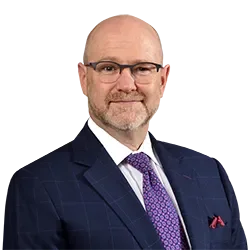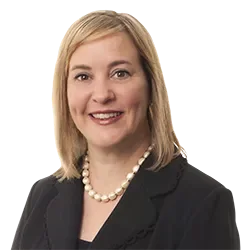ASAP
District Court Rejects Untimely Claims in Pattern or Practice Lawsuit
A federal district judge in Ohio delivered another blow to the U.S. Equal Employment Opportunity Commission's (EEOC's or "Commission's") persistent efforts to seek relief under Title VII for individuals participating as "class" claimants in pattern or practice suits brought by the EEOC, but claiming to be aggrieved more than 300 days before the filing of the administrative charge triggering the EEOC's investigation. Specifically, the court in EEOC v. Kaplan HigherEducation Corp. held that the plain language of the statute does not carve out an exception for the EEOC to bring untimely claims.1
Section 706 of Title VII gives the EEOC authority to sue on behalf of one or more persons aggrieved by an unlawful discriminatory employment practice where the individual filed a charge with the Commission within 300 days after the alleged act.2 Likewise, section 707 allows the Commission to investigate and act on cases involving a pattern or practice of discrimination in accordance with the procedures set forth in section 706.3 The argument favoring imposing the limitations set forth in section 706 for pattern or practice claims brought by the EEOC is as follows: absent a clear expression by Congress, there is no reason for providing the EEOC a free pass from Congress's policy favoring the filing of prompt charges and notifying employers of investigations. The unappealing alternative, posited by the EEOC in its pattern or practice matters, is to free the agency from any time limits. Although the language of the law makes clear that the 300-day requirement also applies to the section 707 pattern or practice claims, the EEOC has made numerous attempts – with mixed results – to escape this limitation on the basis that such a requirement is contrary to Congress's intent for the EEOC to remedy systemic discrimination in the workplace. The EEOC has argued that it does not proceed as a representative of either the individual who filed the initial charge or for any others for whom it seeks relief; rather, it proceeds primarily in the public interest. Alternatively, the EEOC argues that when it succeeds in proving an unlawful pattern or practice of unlawful discrimination, all unlawful acts that stem from that pattern or practice are actionable regardless of whether such acts occurred before the 300-day charge filing limitation.
The district court in Kaplan, following an emerging line of decisions by courts in other districts, rejected both of these arguments, reasoning that the plain language of the statute makes clear that Congress intended discrimination claims to be resolved promptly. This ruling thwarted the EEOC's attempt to resurrect stale and untimely claims by limiting the scope of the lawsuit to those employment decisions made within 300 days of the charge that triggered the EEOC's investigation and lawsuit.
Title VII's Charge Filing Period for EEOC Lawsuits
While employers tend to be most familiar with discrimination claims brought by an individual employee (or former employee), Title VII also authorizes the EEOC to bring Title VII claims in its own name on behalf of one or more employees who claim to be aggrieved by an unlawful discriminatory practice, as was the case in Kaplan. The EEOC has increased its emphasis on these higher-impact claims over the years. These particular claims are still subject to administrative prerequisites – namely that someone files a discrimination charge with the EEOC within 300 days of the alleged discriminatory act (such as a failure to hire or a termination); that the EEOC investigate the charge and make a reasonable cause determination; and that the EEOC first attempt to resolve the claim through conciliation before initiating a civil action.4
Federal Courts Reject the Notion that the EEOC Can Bring Claims Occurring Before the 300-day Filing Requirement
At issue in Kaplan and other lawsuits brought by the EEOC is whether the 300-day filing requirement expressed in section 706 applies to pattern or practice claims also brought under section 707. The EEOC asserts that the 300-day requirement does not come into play in its pattern or practice lawsuits, and that any act resulting from the pattern or practice is actionable under section 707 regardless of the time restriction. In other words, the EEOC relies on section 707 to broaden its "class" of claimants to individuals who may have been aggrieved long before the 300-day filing deadline.
For example, in Kaplan, the EEOC alleges that the defendant engaged in a nationwide pattern or practice of race discrimination by relying on credit histories to make hiring and other employment decisions, asserting that the practice has a disparate impact on black job applicants and employees. Such allegations were first made known to the EEOC by a former Kaplan employee who alleged she was terminated on February 15, 2009, on the basis of her credit history report. She filed a charge of discrimination with the EEOC within a couple weeks of her discharge, and the EEOC filed its complaint in federal court in December 2010, asserting unlawful discrimination dating as far back as January 2008.
Finding the plain language of the law controlling, the district judge in Kaplan narrowed the "class" of potential claims by barring as untimely those claimants who may have been affected more than 300 days before the operative charge giving rise to the lawsuit. Indeed, the court agreed with another recent decision in the District of Maryland in explaining that had Congress intended to allow the EEOC to resurrect the stale claims of individuals who did not timely file charges, it would have expressly so stated.5 Other courts have even opined that this 300-day time limit should begin to run for claims arising within 300 days of the employer first being made aware of a broader EEOC investigation into possible "class" or pattern or practice claims, and not necessarily from the earlier date that an individual charge was filed (i.e., if a pattern or practice of discrimination, or an alleged discriminatory policy was not asserted in the original charge).6
In the Kaplan case and in other cases involving older "class" claims, the EEOC relied on the policy argument that, given its enforcement mission and power to bring pattern or practice claims, Congress did not intend to limit the EEOC's ability to reach back beyond the charge filing limit to attempt to remedy alleged instances of discrimination. Some district courts have sided with the EEOC on this question,7 and no U.S. Court of Appeals has decided the issue. For this reason, given the EEOC's emphasis on bringing the more sweeping pattern or practice claims on behalf of larger "classes" of claimants, the EEOC can be expected to continue asserting that it has no time restrictions in recruiting and proceeding on behalf "class" members similarly affected by the challenged pattern or practice.
"Pattern Or Practice" Is Different from "Continuing Violation"
In furtherance of its efforts to side-step the statutory time limitations, the EEOC has argued in the alternative that its pattern or practice lawsuits fit within the exceptions provided by the "continuing violations" doctrine. The continuing violations doctrine allows courts to consider the cumulative effect of individual acts that, on their own, do not amount to actionable discrimination, but considered as a whole may give rise to unlawful discrimination, such as a hostile work environment. In such a case, the Supreme Court holds that so long as an act contributing to the claim occurred within the 300-day period, the court may consider component acts that gave rise to the hostile work environment that occurred outside the statutory period.
By contrast, discrete acts – such as failure to hire, failure to promote, or a termination – are barred as untimely if they are not raised in a discrimination charge within 300 days.
The EEOC has attempted to blur the line between pattern or practice claims and the continuing violations doctrine, but Kaplan and other courts have rejected such efforts. Specifically, courts distinguish between "component acts," which cumulatively may amount to a discriminatory claim, such as a hostile work environment, and "discrete acts" which, on their own, may amount to adverse action. The former are actionable if at least one of the acts occurred within the 300-day statutory period, whereas the later are time-barred if not timely filed. In short, "[t]he 'pattern or practice' alleged should not be used to allow the EEOC to seek relief on behalf of otherwise time-barred parties when the challenged practice involves discrete acts of discrimination."8
What Does this Mean for Employers?
Although sections 706 and 707 empower the EEOC to investigate and litigate pattern or practice claims, the Kaplan ruling joins a growing number of other district courts in limiting how far back the Commission can assemble its "class" of aggrieved individuals. Although the EEOC may continue to argue in favor of being allowed to side-step Title VII's time restrictions, the most recent opinions are spoiling these efforts.
With such limitations in place, the EEOC remains able to litigate pattern or practice claims and challenge practices that the Commission believes are discriminatory, but the Commission is simply prevented from resurrecting stale claims and, importantly, is limited in its ability to expand the number of claimants in litigation and extract larger settlements under the threat of larger "classes." Already, the pendency of similar timeliness motions in other EEOC pattern or practice cases may have helped leverage less onerous settlements for employers. Moreover, employment litigation can be daunting when employers are forced to locate witnesses with fading memories or who may no longer work for the company – a reality of "class" litigation that grows exponentially more difficult for older claims, particularly in industries with higher employee turnover. Even with the limitations associated with applying the 300-day rule to the EEOC, employers in these "class" cases often encounter difficulty finding witnesses with clear recollections of events surrounding newly identified claimants, because actual litigation brought by the EEOC, and identification of all claimants, often occurs years after the filing of the initial charge. The emerging trend of district court rulings like Kaplan can nonetheless provide some relief to employers by placing limited restraints on the EEOC with respect to claims not promptly pursued.
1 No. 10 CV 2882 (N.D. Ohio May 10, 2011).
2 42 U.S.C. § 2000e-5(e)(1). If a jurisdiction does not have its own enforcement agency, then the charge-filing requirement is 180 days.
3 42 U.S.C. § 2000e-6(e).
4 42 U.S.C. 2000-e5.
5 Kaplan (citing EEOC v. Freeman, 2010 U.S. Dist. LEXIS 41336 (D. Md. Apr. 27, 2010); see also EEOC v. Bloomberg, L.P., 751 F. Supp. 2d 628 (S.D.N.Y. 2010); EEOC v. CRST Van Expedited, Inc., 615 F. Supp. 2d 867 (N.D. Iowa 2009); EEOC v. Burlington Med. Supplies, Inc., 536 F. Supp. 2d 647 (E.D. Va. 2008); EEOC v. Custom Cos., Inc., Nos. 02 CV 3768 and 03 CV 2293 (N.D. Ill. Apr. 7, 2004); EEOC v. Optical Cable Corp., 169 F. Supp. 2d 539 (W.D. Va. 2001).
6 EEOC v. Freeman, 2011 U.S. Dist. LEXIS 8718 (D. Md. Jan. 31, 2011); EEOC v. Optical Cable Corp., 169 F. Supp. 2d 539 (W.D. Va. 2001).
7 See EEOC v. LA Weight Loss, 509 F. Supp. 2d 527 (D. Md. 2007); EEOC v. Sterling Jewelers, 2009 U.S. Dist. LEXIS 122102 (W.D.N.Y. 2009).
8 EEOC v. Bloomberg, L.P., 751 F. Supp. 2d 628, 648 (S.D.N.Y. 2010).
Peter Petesch is a Shareholder in Littler Mendelson's Washington, D.C. office, and Amy Ryder Wentz is an Associate in the firm's Cleveland office. If you would like further information, please contact your Littler attorney at 1.888.Littler, info@littler.com, Mr. Petesch at ppetesch@littler.com, or Ms. Wentz at awentz@littler.com.

